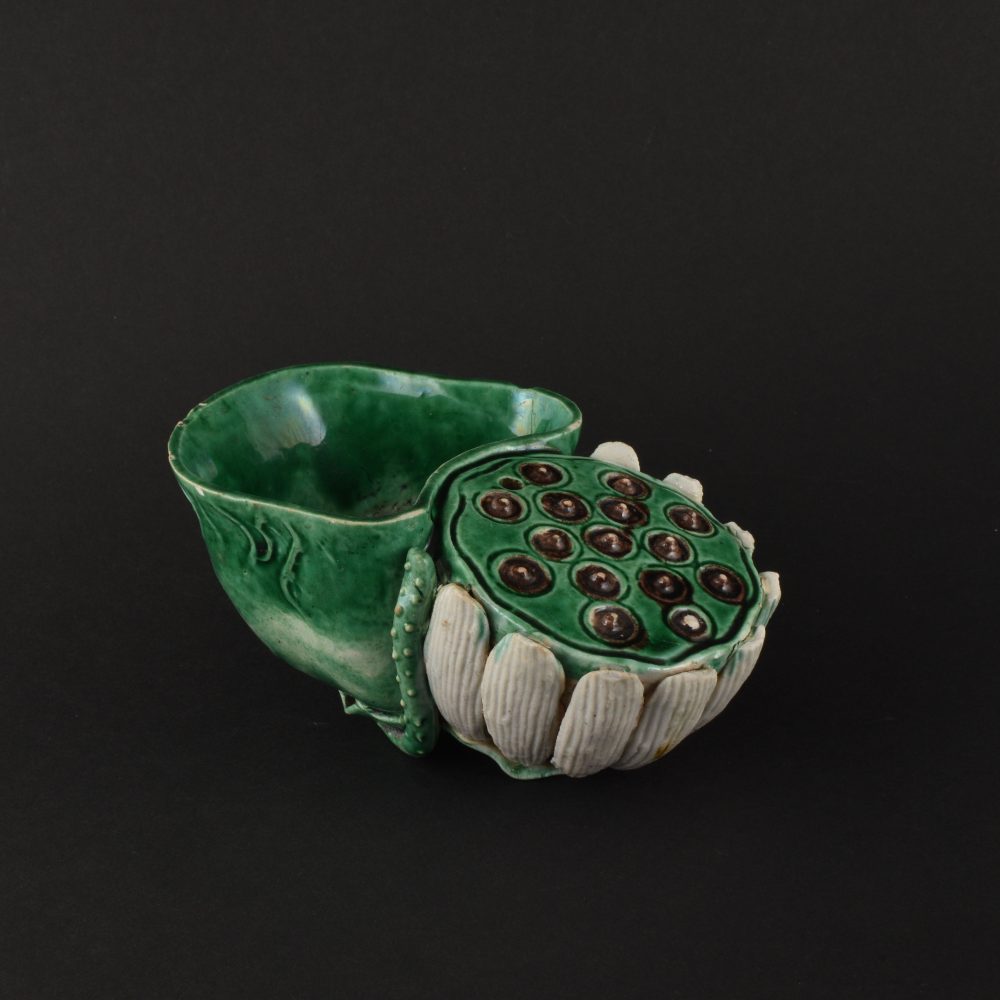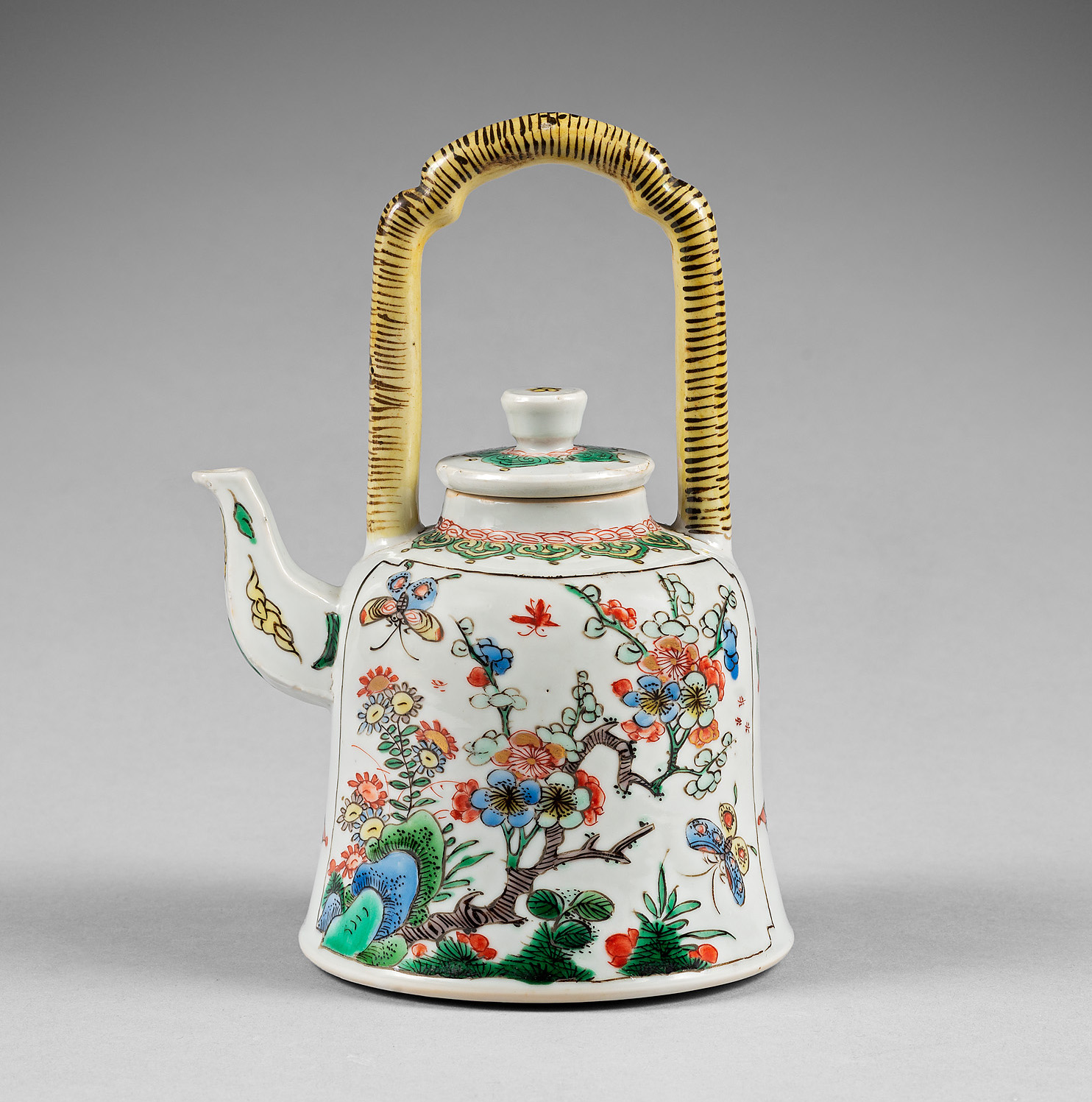




A Chinese lotus water dropper decorated with famille verte enamels on the biscuit. Kangxi period
The vessel is formed as a cupped lotus leaf and a conjoined lotus pod with an aperture. It is covered in green and aubergine glazes. Applied inside the bottom of the bowl is a tiny crab painted in aubergine enamel, which conceal a small opening.
- Country:
- China
- Period :
- Kangxi (1662-1722), ca. 1690/1710
- Material:
- Porcelain (biscuit)
- Dimension:
- 4.52 in. / 2.55 in. / 1.96 in. (11.5 cm / 6.5 cm / 5 cm)
- Reference :
- C746
- Status:
- sold
Related works
For two water droppers of this model, see Jorge Welsh, Biscuit: Refined Chinese Famille Verte Wares, Jorge Welsh Books, London and Lisbon, October, 2012, pp. 112-117, no. 24,25, 26.
Further water droppers can be are in the Marie Vergottis Collection (Switzerland), or in the Rijksmuseum (Amsterdam).
Notice
Water droppers were required for the scholar’s desk, in conjunction with several others items needed for writing. These included the essential ink, brush, inkstand and paper (known as the scholar’s “Four Treasures”), as well as a host of other objects such as brush pots and brush rests.
Water droppers were used to pour tiny droplets of water onto an inkstand in order to grind ink. It is possible that the bowls of these pieces were additionally used for washing brushes. Thought primarily intended for the scholar’s desk, it has been suggested than this type os small scholarly item became a fashionable collectable in the West, bought thought private trade.
Lotus was a particularly popular theme for small scholarly items and especially for brush washers and water droppers. it is often used as a metaphor for the poor scholar, who might be able to achieve success by working hard and passing the imperial examinations.

























